Nidhir Bhavsar
How Many Parameters Does it Take to Change a Light Bulb? Evaluating Performance in Self-Play of Conversational Games as a Function of Model Characteristics
Jun 20, 2024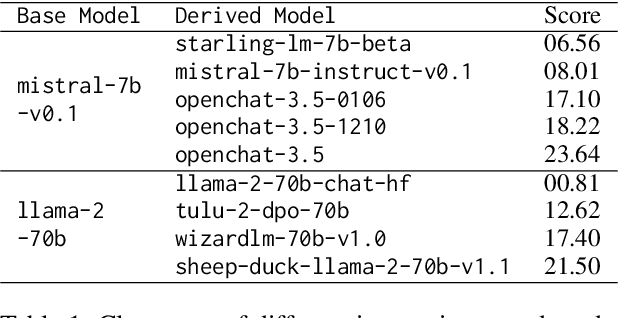
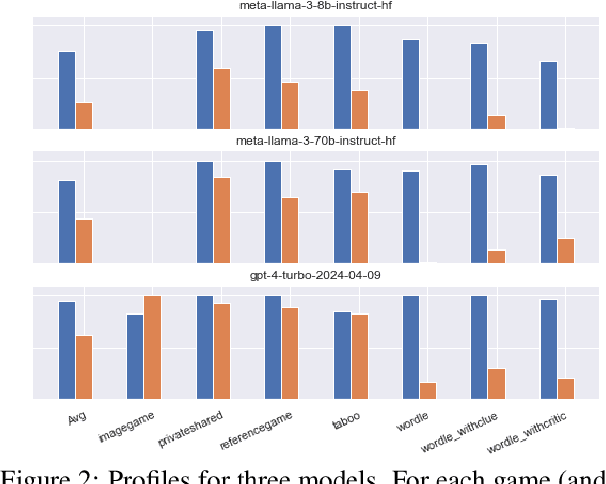
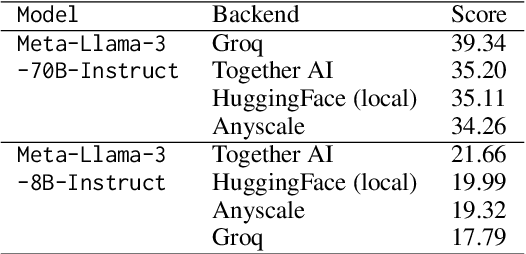

Abstract:What makes a good Large Language Model (LLM)? That it performs well on the relevant benchmarks -- which hopefully measure, with some validity, the presence of capabilities that are also challenged in real application. But what makes the model perform well? What gives a model its abilities? We take a recently introduced type of benchmark that is meant to challenge capabilities in a goal-directed, agentive context through self-play of conversational games, and analyse how performance develops as a function of model characteristics like number of parameters, or type of training. We find that while there is a clear relationship between number of parameters and performance, there is still a wide spread of performance points within a given size bracket, which is to be accounted for by training parameters such as fine-tuning data quality and method. From a more practical angle, we also find a certain degree of unpredictability about performance across access methods, possible due to unexposed sampling parameters, and a, very welcome, performance stability against at least moderate weight quantisation during inference.
Interaction is all You Need? A Study of Robots Ability to Understand and Execute
Nov 13, 2023Abstract:This paper aims to address a critical challenge in robotics, which is enabling them to operate seamlessly in human environments through natural language interactions. Our primary focus is to equip robots with the ability to understand and execute complex instructions in coherent dialogs to facilitate intricate task-solving scenarios. To explore this, we build upon the Execution from Dialog History (EDH) task from the Teach benchmark. We employ a multi-transformer model with BART LM. We observe that our best configuration outperforms the baseline with a success rate score of 8.85 and a goal-conditioned success rate score of 14.02. In addition, we suggest an alternative methodology for completing this task. Moreover, we introduce a new task by expanding the EDH task and making predictions about game plans instead of individual actions. We have evaluated multiple BART models and an LLaMA2 LLM, which has achieved a ROGUE-L score of 46.77 for this task.
Multi-label classification for biomedical literature: an overview of the BioCreative VII LitCovid Track for COVID-19 literature topic annotations
Apr 20, 2022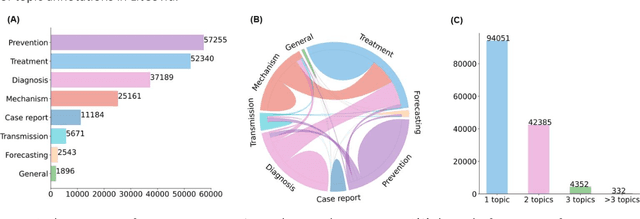


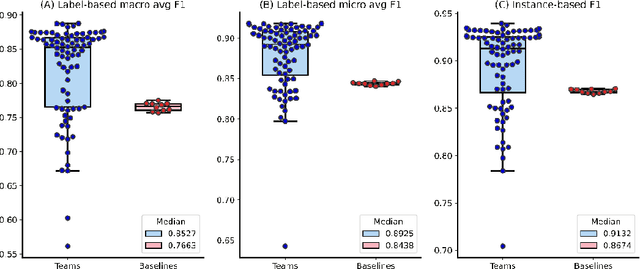
Abstract:The COVID-19 pandemic has been severely impacting global society since December 2019. Massive research has been undertaken to understand the characteristics of the virus and design vaccines and drugs. The related findings have been reported in biomedical literature at a rate of about 10,000 articles on COVID-19 per month. Such rapid growth significantly challenges manual curation and interpretation. For instance, LitCovid is a literature database of COVID-19-related articles in PubMed, which has accumulated more than 200,000 articles with millions of accesses each month by users worldwide. One primary curation task is to assign up to eight topics (e.g., Diagnosis and Treatment) to the articles in LitCovid. Despite the continuing advances in biomedical text mining methods, few have been dedicated to topic annotations in COVID-19 literature. To close the gap, we organized the BioCreative LitCovid track to call for a community effort to tackle automated topic annotation for COVID-19 literature. The BioCreative LitCovid dataset, consisting of over 30,000 articles with manually reviewed topics, was created for training and testing. It is one of the largest multilabel classification datasets in biomedical scientific literature. 19 teams worldwide participated and made 80 submissions in total. Most teams used hybrid systems based on transformers. The highest performing submissions achieved 0.8875, 0.9181, and 0.9394 for macro F1-score, micro F1-score, and instance-based F1-score, respectively. The level of participation and results demonstrate a successful track and help close the gap between dataset curation and method development. The dataset is publicly available via https://ftp.ncbi.nlm.nih.gov/pub/lu/LitCovid/biocreative/ for benchmarking and further development.
 Add to Chrome
Add to Chrome Add to Firefox
Add to Firefox Add to Edge
Add to Edge